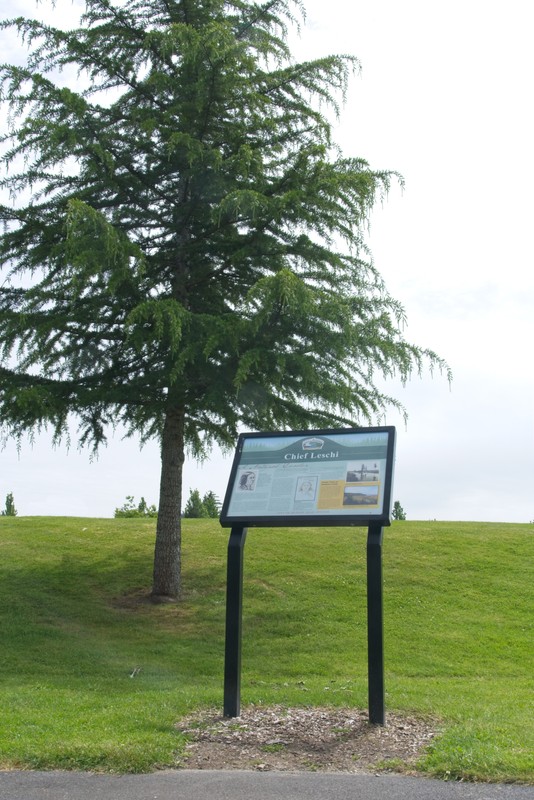Chief Leschi Park
Introduction
Text-to-speech Audio
Chief Leschi Park, named for Chief Leschi a Nisqually leader, is the largest park in DuPont, WA Hoffman Hills housing development. Chief Leschi, along with his brother Quiemuth, led the Nisqually Tribe warriors to war in 1855 over the need for better reservation land. Leschi was accused of killing a militiaman and after several trials was hung on February 19, 1858. Many people, including U.S. Army officers at Fort Steilacoom, felt he was innocent. In 2004, a special historical court retried Leschi and exonerated him on the charge of murder.
Images
Chief Leschi interpretative sign

Backstory and Context
Text-to-speech Audio
Leschi along with his brother Quiemuth were leaders of the Nisqually Tribe. Both worked well with Hudson’s Bay employees and the American settlers that arrived in the mid 1800s. When Isaac Stevens, the Governor of the Washington territory, wanted to negotiate land settlements with the Natives he designated Quiemuth as Chief of the Nisqually and Leschi as Sub-Chief. At the Medicine Creek Council of 1854, the reservation mapped out for the Nisquallies was rejected by Leschi, but his signature was forged on the document.
The following year the Puget Sound Indian-Settler War broke out with Leschi leading the Nisqually, Puyallup, and upper Duwamish tribes. The war lasted until the next year and soon after the war Leschi was arrested and put on trial under the accusation of killing a militiaman. On February 19, 1858 he was executed by hanging.
In December 2004 a historical court was held that exonerated Leschi of the murder charges.
Sources
DuPont Historical Museum. Accessed June 11th 2021. https://www.dupontmuseum.com/chief-leschi.
Carpenter, Cecelia Svinth. Fort Nisqually: A Documented History of Indian and British Interaction. Tahoma, WA. Tahoma Rsearch, 1982.
